Q2 2016 Take-up Stats for the BDUK and BT Fibre Broadband Roll-out
The Government’s Broadband Delivery UK project has released its latest Q2 2016 take-up data for the state aid supported roll-out of superfast broadband (24Mbps+) services across the United Kingdom, which shows that many local authorities are seeing 30% adoption of the new service and that will help reinvestment.
Understanding take-up is crucial because it links into the clawback (gain share) mechanism of BDUK’s local authority contracts, which requires BT to return part of the public investment when adoption of the new service passes beyond the 20% mark in related areas. The funding can then be reinvested to further boost coverage and connection speeds via future contracts.
Advertisement
The Government’s former Digital Economy Minister, Ed Vaizey (MP), revealed earlier this year that they’re “on course to clawback £250 million, maybe more. I think it’s been a very cost effective programme.” BDUK has recently hinted that this could be enough to push UK wide coverage to around 97-98% by 2019 via future contracts.
The following figures predominantly reflect take-up of superfast connectivity in areas that have been upgraded through the now completed Phase One (90% UK coverage by spring 2016) of the BDUK scheme with BT (i.e. % subscribed of premises passed by BDUK and BT’s joint roll-out), which has predominantly been installing its ‘up to’ 40-80Mbps FTTC and a tiny bit of 330Mbps FTTP technology. We’ve also got some early date for the separate Phase Two (95% UK coverage by 2017/18) at the bottom.
The list breaks down the take-up by each BDUK local authority / project area, although for the proper context these percentages should ideally be considered alongside the most recent premises passed (network coverage) data for each local authority. At the end of Q2 2016 BDUK and BT put an additional 4 million premises within reach of the faster connectivity (here).
NOTE: Some of the counties have divided their roll-outs into separate projects / contracts. For example the Phase One data for Shropshire won’t include the Telford and Wrekin area because that is a separate Phase Two contract in the same county, which has only recently started deployment.
Advertisement
BDUK Phase One Take-up (Average 28.5%)
| Project Area (BDUK PHASE 1) | Uptake % (Sep 2015) | Uptake % (Dec 2015) | Uptake % (Mar 2016) | Uptake % (Jun 2016) |
| Berkshire Councils | 16.6 | 23.2 | 31.5 | 34.8 |
| Buckinghamshire and Hertfordshire | 19.6 | 23.2 | 29.9 | 34.1 |
| Cambridgeshire, Peterborough | 23.9 | 24.1 | 35.2 | 34.7 |
| Central Beds, Bedford Borough, Milton Keynes | 18.2 | 21.1 | 29 | 31 |
| Cheshire East, Cheshire West & Chester, Warrington, Halton | 20.4 | 20.5 | 32.6 | 35 |
| Devon & Somerset (including, Plymouth, Torbay, North Somerset, Bath & NE Somerset) | 14.9 | 16.8 | 22.5 | 24.4 |
| Coventry, Solihull, Warwickshire | 17.2 | 20.1 | 32 | 32.9 |
| Cumbria | 16.8 | 17.3 | 25 | 27.5 |
| Derbyshire | 12.6 | 14.6 | 20.1 | 22.5 |
| Dorset, Bournemouth and Poole | 12.9 | 15.7 | 21.9 | 24.1 |
| Durham, Gateshead, Tees Valley and Sunderland | 14.8 | 15.2 | 21 | 22.8 |
| East Riding of Yorkshire | 13.8 | 17.4 | 27.2 | 30.3 |
| East Sussex, Brighton and Hove | 17.3 | 21 | 27.6 | 29.4 |
| Essex, Southend-On-Sea, Thurrock | 15.1 | 18 | 23.6 | 26.7 |
| Greater Manchester | 12.8 | 18.8 | 24.7 | 28.5 |
| Hampshire | 16.7 | 21.9 | 28.2 | 31.5 |
| Herefordshire and Gloucestershire | 16.7 | 16.7 | 22.9 | 24.1 |
| Isle of Wight | 10.2 | 13.9 | 19.8 | 22.7 |
| Kent and Medway | 16.9 | 16.9 | 26.7 | 29.8 |
| Lancashire, Blackpool, Blackburn with Darwen | 14.8 | 19.3 | 31.1 | 32.9 |
| Leicestershire | 17.9 | 20.2 | 27.1 | 30.8 |
| Lincolnshire | 17.2 | 20 | 27 | 29.6 |
| Merseyside | 10 | 12.8 | 24.4 | 26.4 |
| Newcastle upon Tyne | 10.6 | 10.6 | 25.7 | 28 |
| Norfolk | 18 | 20.8 | 28 | 30.2 |
| North Lincolnshire, North East Lincolnshire | 21 | 24.4 | 30.6 | 32.8 |
| North Yorkshire | 25.2 | 25.2 | 32 | 37.1 |
| Northamptonshire | 25.7 | 28.2 | 36.7 | 40.1 |
| Northumberland | 19.8 | 22.9 | 28 | 30.8 |
| Nottinghamshire | 16 | 18.8 | 26.8 | 29.7 |
| Oxfordshire | 20.1 | 24.4 | 26.1 | 33.9 |
| Rutland | 42.3 | 44.1 | 51.7 | 53.8 |
| Shropshire | 18.5 | 20.4 | 27 | 29.1 |
| Staffordshire and Stoke-on-Trent | 14.1 | 15.7 | 23.9 | 26.8 |
| Suffolk | 18.9 | 18.9 | 31.5 | 33.6 |
| Surrey | 29.7 | 32.5 | 42.2 | 44.2 |
| West Sussex | 19.4 | 22.7 | 23.2 | 33.9 |
| West Yorkshire | 14.4 | 14.4 | 27.7 | 30.4 |
| Wiltshire, South Gloucestershire | 22.8 | 20.5 | 37.5 | 34.8 |
| Worcestershire | 17.8 | 19.1 | 25.6 | 26.2 |
| Devolved Administrations | ||||
| Highlands and Islands | 14.6 | 16.1 | 21.6 | 22.9 |
| Northern Ireland | 13.5 | 18.2 | 19.3 | 27.3 |
| Rest of Scotland | 13.5 | 14.6 | 20.9 | 22.3 |
| Wales | 23.1 | 24.7 | 22.4 | 26.4 |
BDUK Phase Two Take-up (Average 10%)
| Project Area (BDUK Phase 2 – Superfast Extension Programme) | Uptake % (Mar 2016) | Uptake % (Jun 2016) |
| Black Country | 5.7 | 6.7 |
| Cheshire East, Cheshire West & Chester, Warrington, Halton | 22 | 22.1 |
| East Riding of Yorkshire | No Data | 10.5 |
| Hampshire | No Data | 0.3 |
| Kent and Medway | 6.9 | 8.3 |
| Lancashire, Blackpool, Blackburn with Darwen | No Data | 1.8 |
| Leicestershire | No Data | 7.1 |
| Lincolnshire | No Data | 4.8 |
| Norfolk | 18.6 | 16.5 |
| North Lincolnshire, North East Lincolnshire | No Data | 7.3 |
| Northamptonshire | No Data | 15.6 |
| Nottinghamshire | No Data | 6.9 |
| South Gloucestershire | 16.2 | 15.3 |
| South Yorkshire | 4.2 | 9.2 |
| Suffolk | 12.5 | 12.4 |
| Telford & Wrekin | 5.7 | 7.7 |
| Warwickshire, Solihull and Coventry | No Data | 8.6 |
| West Yorkshire | No Data | 4.5 |
| Wiltshire | 0.2 | 0.2 |
IMPORTANT: Take-up is a dynamically scaled measurement, which means that at certain stages of the scheme it may go up or even down depending upon the pace of deployment (i.e. premises passed in any given time-scale), although over time the take-up should only rise.
Explained another way, early phases of the roll-out are easier and faster to deploy, so you can expect to see a bit of a yo-yo movement with the take-up % sometimes falling if lots of new areas are suddenly covered. Some contracts are also younger than others and will thus take time to catch-up. At the same time BDUK’s roll-out pace is also now starting to slow because they’re increasingly reaching into tricky rural areas (Phase 2), which will give take-up a chance to climb in Phase 1.
A number of other factors can also impact take-up, such as the higher prices for related “fibre” services, as well as customers being locked into long contracts with their existing ISP (they can’t upgrade immediately) and a lack of general availability awareness (locals don’t know it exists) or interest in the new connectivity (if you have a decent ADSL2+ speed then you might feel less inclined to upgrade).
In other cases the new service may run out of capacity (i.e. demand is higher than expected), which means that people who want to upgrade are prevented from doing so until Openreach resolves the problem. However the scale of this issue is very small.
Advertisement
Mark is a professional technology writer, IT consultant and computer engineer from Dorset (England), he also founded ISPreview in 1999 and enjoys analysing the latest telecoms and broadband developments. Find me on X (Twitter), Mastodon, Facebook, BlueSky, Threads.net and Linkedin.
« Report Finds Poor SME Broadband Hampers the “Northern Powerhouse”
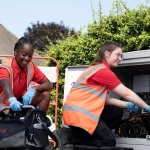

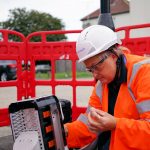
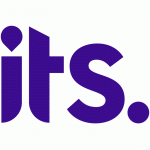



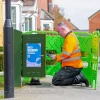

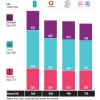








































Comments are closed